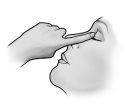
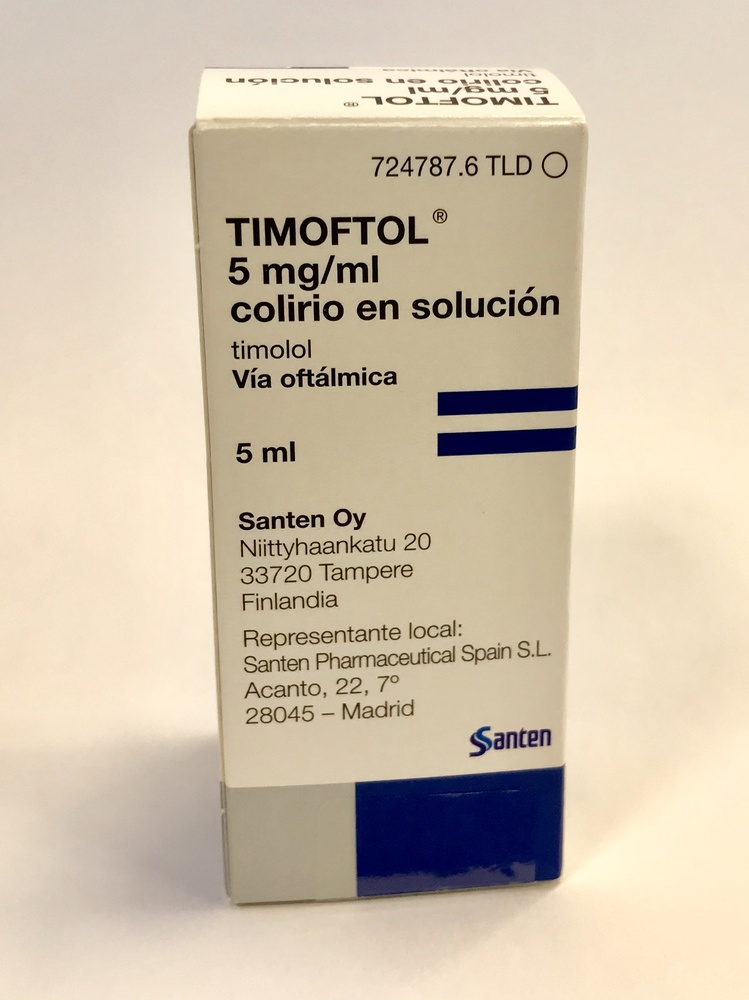
ТИМОФТОЛ 5 мг/мл ГЛАЗНЫЕ КАПЛИ, РАСТВОР

Спросите врача о рецепте на ТИМОФТОЛ 5 мг/мл ГЛАЗНЫЕ КАПЛИ, РАСТВОР

Инструкция по применению ТИМОФТОЛ 5 мг/мл ГЛАЗНЫЕ КАПЛИ, РАСТВОР
Введение
Проспект: информация для пользователя
ТИМОФТОЛ 5 мг/мл глазные капли в растворе
Тимолол
Прочитайте внимательно весь проспект перед началом использования этого лекарства, поскольку он содержит важную информацию для вас.
- Сохраните этот проспект, поскольку вам может понадобиться прочитать его снова.
- Если у вас есть какие-либо вопросы, проконсультируйтесь с вашим врачом или фармацевтом.
- Это лекарство было назначено только вам, и его не следует давать другим людям, даже если они имеют те же симптомы, что и вы, поскольку оно может нанести им вред.
- Если вы испытываете побочные эффекты, проконсультируйтесь с вашим врачом или фармацевтом, даже если это побочные эффекты, которые не указаны в этом проспекте. См. раздел 4.
Содержание проспекта
- Что такое ТИМОФТОЛ и для чего он используется
- Что вам нужно знать перед началом использования ТИМОФТОЛА
- Как использовать ТИМОФТОЛ
- Возможные побочные эффекты
- Хранение ТИМОФТОЛА
- Содержание упаковки и дополнительная информация
1. Что такое ТИМОФТОЛ и для чего он используется
Тимофтол является глазным бета-блокатором, который принадлежит к группе лекарств, называемых местными антиглаукоматозными препаратами.
Это лекарство показано для снижения повышенного давления в глазу у:
- гипертонии глаза
- хронического открытоугольного глаукомы (включая пациентов с афакическим глазом)
- некоторых пациентов с вторичным глаукомой.
2. Что вам нужно знать перед началом использования ТИМОФТОЛА
Не используйте ТИМОФТОЛ
- Если вы аллергичны (гиперчувствительны) к тимололу, бета-блокаторам или любому другому компоненту Тимофтола (перечисленному в разделе 6).
- Если у вас сейчас или было в прошлом серьезные проблемы с дыханием, такие как астма.
- Если у вас сейчас или было в прошлом хроническая обструктивная болезнь легких (тяжелое заболевание легких, которое может вызывать свистящее дыхание, трудности с дыханием и/или постоянный кашель).
- Если у вас есть определенные сердечные заболевания (такие как медленный или нерегулярный сердечный ритм), синусовая брадикардия (сердечный ритм ниже 60 ударов в минуту), атриовентрикулярный блок II или III степени, выраженная сердечная недостаточность или кардиогенный шок.
- Если у вас есть дистрофия роговицы (дегенеративное заболевание роговицы).
- Если у вас есть тяжелая аллергическая ринит и бронхиальная гиперреактивность.
Предостережения и меры предосторожности
Проконсультируйтесь с вашим врачом перед началом использования Тимофтола.
Будьте особенно осторожны с Тимофтолом.
До использования этого лекарства сообщите вашему врачу, если у вас есть или были в прошлом:
- сердечные проблемы, такие как коронарная болезнь (симптомы включают боль в груди или удушье, одышку или удушье)
- нарушения сердечного ритма (такие как медленный или нерегулярный сердечный ритм)
- проблемы с кровообращением (такие как болезнь Рейно или синдром Рейно)
- дыхательные или легочные проблемы (такие как астма или хроническая обструктивная болезнь легких)
- диабет или другие проблемы с уровнем сахара в крови, поскольку тимолол может маскировать признаки и симптомы низкого уровня сахара в крови
- гиперактивность или заболевание щитовидной железы, поскольку тимолол может маскировать их признаки и симптомы
Сообщите вашему врачу перед операцией, что вы используете Тимофтол, поскольку он может изменить эффекты некоторых лекарств, используемых во время анестезии.
Также сообщите вашему врачу о любой аллергии или лекарстве.
Тимолол может всасываться через глаз и попадать в кровь, могут возникать те же побочные эффекты, что и при приеме других пероральных бета-блокаторов.
- Если вы принимаете пероральные бета-блокаторы или лекарства, снижающие артериальное давление, сообщите вашему врачу, поскольку они могут увеличить эффекты тимолола на внутриглазное давление.
- Клонидин, поскольку может возникнуть высокое артериальное давление при отмене клонидина.
- Лекарства для лечения сердечного ритма, такие как дисопирамид, хинидин (используемый также для лечения некоторых типов малярии) и амиодарон, поскольку тимолол может увеличить их эффекты.
- Лекарства для лечения диабета (инсулин и пероральные антидиабетические препараты), поскольку тимолол может маскировать определенные признаки гипогликемии (низкого уровня сахара в крови), такие как тахикардия (быстрый сердечный ритм).
- Анестетики.
- Лекарства для лечения язвы желудка, такие как циметидин.
- Алкоголь.
- Адреналин, поскольку вместе с тимололом может вызвать расширение зрачка (мидриаз).
- Лекарства для лечения депрессии, такие как флуоксетин или пароксетин.
Беременность и лактация
Если вы беременны или кормите грудью, считаете, что можете быть беременной или планируете стать беременной, проконсультируйтесь с вашим врачом или фармацевтом перед использованием этого лекарства.
Не используйте Тимофтол, если вы беременны, unless ваш врач считает, что это необходимо. Из-за возможного возникновения побочных эффектов у плода ваш врач оценит соотношение пользы и риска приема Тимофтола.
Не используйте Тимофтол, если вы кормите грудью. Тимолол может проникать в грудное молоко. Из-за возможного возникновения побочных эффектов ваш врач решит, следует ли прекратить лечение Тимофтолом или прекратить грудное вскармливание.
Вождение и использование машин
Тимофтол может вызывать головокружение, усталость или размытое зрение, которые могут повлиять на вашу способность управлять транспортными средствами и использовать машины.
ТИМОФТОЛ содержит бензалконий хлорид и фосфаты
Это лекарство содержит 0,11 мг бензалкония хлорида в каждом мл.
Бензалконий хлорид может всасываться в мягкие контактные линзы и изменить их цвет. Удалите контактные линзы перед использованием этого лекарства и подождите 15 минут перед повторным их использованием.
Бензалконий хлорид может вызывать раздражение глаз, особенно если у вас сухость глаз или другие заболевания роговицы (прозрачной оболочки передней части глаза). Проконсультируйтесь с вашим врачом, если вы чувствуете странное ощущение, зуд или боль в глазу после использования этого лекарства.
Это лекарство содержит 30,42 мг дигидrogenофосфата динатрия дodecahydrata и 6,10 мг дигидrogenофосфата натрия дигидrata в каждом мл. Если у вас есть серьезное повреждение роговицы, лечение фосфатами может вызвать помутнение роговицы из-за кальция.
3. Как использовать ТИМОФТОЛ
Следуйте точно инструкциям по применению этого лекарства, указанным вашим врачом. В случае сомнений проконсультируйтесь с вашим врачом или фармацевтом.
Помните использовать лекарство.
Ваш врач определит дозу и продолжительность лечения Тимофтолом. Не прекращайте лечение раньше времени, поскольку это прекратит его полезный эффект.
Тимофтол является глазным каплям для местного применения.
Нормальная доза составляет одну каплю Тимофтола 2,5 мг/мл в пораженный глаз или глаза дважды в день. Если ответ неудовлетворительный, ваш врач может увеличить дозу до одной капли Тимофтола 5 мг/мл в пораженный глаз или глаза дважды в день.
Ваш врач будет регулярно оценивать ответ на лечение Тимофтолом и решит, необходимо ли дополнить его другими лекарствами для снижения внутриглазного давления.
Если вы используете другие глазные капли одновременно, подождите至少 10 минут между применениями, чтобы активные вещества не были удалены из глаза.
Если этот глазный капли заменяет другое лечение глаукомы или используется вместе с другими лекарствами, ваш врач укажет вам, какую схему следует соблюдать.
Если вы считаете, что действие Тимофтола слишком сильное или слишком слабое, сообщите об этом вашему врачу или фармацевту.
Использование у детей и подростков
До использования тимолола необходимо провести полное медицинское обследование. Ваш врач тщательно оценит соотношение пользы и риска перед началом лечения тимололом. Если польза превышает риск, рекомендуется использовать один раз в день самую низкую доступную концентрацию активного вещества.
Если давление не контролируется достаточно хорошо при этой концентрации, может быть необходимо применение дважды в день с интервалом 12 часов. Пациентов, особенно новорожденных, необходимо внимательно наблюдать в течение 1-2 часов после первой администрации, наблюдая за возникновением побочных эффектов до проведения операции. В случае использования у детей для контроля давления внутри глаза может быть достаточно концентрации 1 мг/мл активного вещества, если она доступна.
Продолжительность лечения
У детей лечение назначается как временное.
Способ применения
При каждом применении необходимо закапать только одну каплю Тимофтола.
После закапывания giữте глаза закрытыми как можно дольше (например, 3-5 минут) и держите палец на углу глаза рядом с носом, чтобы предотвратить распространение капли тимолола по организму.
Инструкции по применению
Не используйте упаковку, если пластиковая защитная полоса вокруг горлышка упаковки отсутствует или повреждена. Когда открываете упаковку впервые, снимите пластиковую защитную полосу.
[Для упаковок, отличных от OCUMETER PLUS:]
Каждый раз, когда используете Тимофтол:
| |
| |
|
|
|
|
|
|
[Только для упаковок OCUMETER PLUS:]
- Перед первым использованием лекарства убедитесь, что защитная полоска на передней части флакона целая. Когда флакон еще не открыт, нормально, если между флаконом и крышкой есть зазор.

Стрелки открытия?
Защитная полоска?
- Мойте руки. Когда открываете флакон впервые, снимите защитную полоску, чтобы нарушить упаковку.
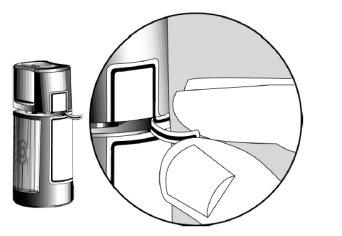
Зазор?
Место для нажатия
Пальцем?
- Чтобы открыть флакон, поверните крышку по указаниям стрелок на верхней части крышки. Не тяните крышку флакона прямо вверх. Тянуть крышку вверх помешает правильной работе дозирующего механизма.
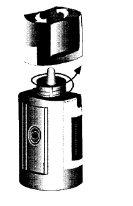
Место для нажатия
Пальцем?
- Наклоните голову назад и слегка отодвиньте нижнее веко, образуя небольшое пространство между веком и глазом.
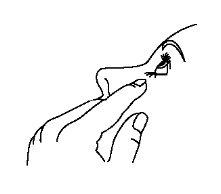
- Переверните флакон и слегка нажмите пальцем на место для нажатия, как показано на следующей картинке, чтобы выпустить одну каплю в глаз согласно инструкциям вашего врача.
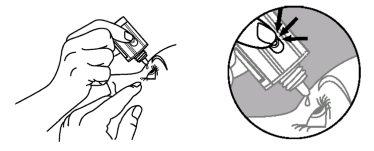
Место для нажатия
Пальцем
НЕ ТРОГАЙТЕ ГЛАЗ НИ ВЕКО КОНЧИКОМ КРЫШКИ.
- После использования Тимофтола нажмите пальцем на угол глаза рядом с носом (как показано на следующей картинке) в течение 2 минут. Это помогает giữать Тимофтол в глазу и предотвращает распространение тимолола по организму.
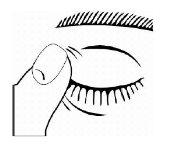
- Если после первого открытия выпуск капли затруднен, положите крышку обратно и слегка нажмите (НО НЕ ПЕРЕНАПРЯГАЙТЕ) и затем снимите крышку, повернув ее в противоположном направлении, как указано на стрелках на верхней части крышки.
- Повторите шаги 4 и 5 в другом глазу, если ваш врач так указал.
- Закройте крышку, повернув ее до тех пор, пока она не коснется края флакона. Для правильного закрытия стрелка на левой стороне крышки должна совпадать со стрелкой на левой стороне этикетки флакона. Не перетягивайте, поскольку это может повредить флакон и крышку.
- Кончик дозирующего механизма предназначен для выпуска одной капли; поэтому НЕ расширяйте отверстие кончика дозирующего механизма.
- После использования всех доз в флаконе останется некоторое количество Тимофтола. Не беспокойтесь, поскольку в него добавлено дополнительное количество Тимофтола, и вы получите полное количество Тимофтола, назначенное вашим врачом. Не пытайтесь удалить излишки лекарства из флакона.
Глазные лекарства, если они используются неправильно, могут быть загрязнены бактериями, которые могут вызывать инфекции глаз. Использование загрязненных глазных растворов может привести к серьезным глазным расстройствам и последующей потере зрения. Если вы считаете, что ваше лекарство может быть загрязнено или если у вас развивается инфекция глаза, немедленно проконсультируйтесь с вашим врачом о дальнейшем использовании этого флакона.
Если вы использовали больше ТИМОФТОЛА, чем должно быть
Если вы использовали больше Тимофтола, чем должно быть, немедленно проконсультируйтесь с вашим врачом или фармацевтом.
Наиболее распространенные симптомы при передозировке тимололом являются: головокружение, головная боль, одышка, снижение частоты сердечных сокращений, снижение артериального давления, сердечная недостаточность и/или остановка сердца.
В случае передозировки или случайного приема проконсультируйтесь немедленно с вашим врачом или фармацевтом или позвоните в Токсикологическую информационную службу, телефон 91.562.04.20, указав лекарство и количество, использованное.
Если вы пропустили использование ТИМОФТОЛА
Не используйте двойную дозу для компенсации пропущенных доз.
Используйте Тимофтол согласно схеме, указанной вашим врачом. Если вы пропустили дозу, применьте ее как можно скорее. Однако, если уже почти время следующей дозы, пропустите пропущенную дозу и вернитесь к вашей обычной схеме применения.
4. Возможные побочные эффекты
Как и все лекарства, Тимофтол может вызывать побочные эффекты, хотя не все люди испытывают их.
Обычно вы сможете продолжать использовать капли, если только побочные эффекты не будут тяжелыми. Если вы обеспокоены, проконсультируйтесь с вашим врачом или фармацевтом. Не прекращайте использование Тимофтола без предварительной консультации с вашим врачом.
При применении тимолола в виде глазных капель были отмечены следующие побочные эффекты:
Частые (могут встречаться у до 1 из 10 пациентов):
- головная боль
- признаки и симптомы раздражения глаз (например, ощущение жжения, покалывания, зуда, конъюнктивита, слезотечения, покраснения), воспаление век, воспаление роговицы, уменьшение чувствительности роговицы и сухость глаз
Редкие (могут встречаться у до 1 из 100 пациентов):
- депрессия
- головокружение, обморок
- нарушения зрения, такие как изменения рефракции
- замедление сердечного ритма (брадикардия)
- затруднение дыхания (диспноэ)
- тошнота, тяжелая digestия (диспепсия)
- усталость/фатига
Очень редкие (могут встречаться у до 1 из 1000 пациентов):
- признаки и симптомы аллергических реакций, включая ангиедему (отек под кожей в области лица и конечностей, который может препятствовать дыханию и вызывать затруднение глотания или дыхания), крапивницу или сыпь с зудом, местную и генерализованную эрупцию, анафилаксию (тяжелую аллергическую реакцию, которая может угрожать жизни)
- бессонница (затруднение засыпания), кошмары, потеря памяти
- чувство онемения или покалывания, увеличение признаков и симптомов миастении gravis (мышечного расстройства), уменьшение либидо, инсульт, ишемия мозга
- птоз (опущение верхнего века, оставляющее глаз полуоткрытым), двоение в глазах (диплопия), отслойка хориоидеи (отслойка сосудистого слоя под роговицей после фильтрационной операции, которая может вызывать нарушения зрения)
- шум в ушах (тиннитус)
- боль в груди, сердцебиение, отек, нерегулярный сердечный ритм, сердечная недостаточность, блокада сердца, остановка сердца
- низкое артериальное давление, феномен Рейно, боль или дискомфорт в конечностях при начале ходьбы, холодные руки и ноги
- затруднение дыхания и сужение дыхательных путей (преимущественно у пациентов с предшествующей бронхо-спастической болезнью), кашель
- диарея, сухость во рту
- потеря волос, псориазоподобная эрупция или ухудшение псориаза
- воспалительное заболевание с лихорадкой, слабостью, болью в суставах и кожными поражениями (системный люпус эритематоз)
- болезнь Пейрони (которая может вызывать выраженную кривизну полового члена)
Частота не известна (не может быть оценена на основе доступных данных):
- галлюцинации
Как и другие лекарства, применяемые в глаза, тимолол проникает в кровь. Это может вызывать побочные эффекты, подобные тем, которые наблюдаются при применении бета-блокаторов внутрь или парентерально. Возникновение побочных эффектов при местном применении в глаза менее часто, чем при пероральном или парентеральном применении. Перечисленные побочные эффекты включают те, которые были отмечены при применении бета-блокаторов для лечения глазных заболеваний:
- Общие аллергические реакции, включая отек под кожей в области лица и конечностей, который может препятствовать дыханию и вызывать затруднение глотания или дыхания, крапивницу или сыпь с зудом, местную и генерализованную эрупцию, зуд, тяжелую аллергическую реакцию, которая может угрожать жизни.
- Низкий уровень глюкозы в крови.
- Затруднение засыпания (бессонница), депрессия, кошмары, потеря памяти.
- Обморок, инсульт, уменьшение кровотока к мозгу, ухудшение признаков и симптомов миастении gravis, головокружение, ощущение онемения или покалывания, боль в голове.
- Признаки и симптомы раздражения глаз (например, жжение, покалывание, зуд, слезотечение, покраснение), воспаление век, воспаление роговицы, размытое зрение и отслойка хориоидеи после фильтрационной операции, которая может вызывать нарушения зрения, уменьшение чувствительности роговицы, сухость глаз, эрозия роговицы, птоз, двоение в глазах.
- Замедление сердечного ритма, сердцебиение, боль в груди, отек, изменения частоты или ритма сердечных сокращений, сердечная недостаточность, нарушения сердечного ритма, блокада сердца, остановка сердца.
- Низкое артериальное давление, феномен Рейно, холодные руки и ноги.
- Сужение дыхательных путей (преимущественно у пациентов с предшествующей бронхо-спастической болезнью), затруднение дыхания, кашель.
- Нарушения вкуса, тошнота, диспепсия, диарея, сухость во рту, боль в животе, рвота.
- Потеря волос, псориазоподобная эрупция или ухудшение псориаза, кожная эрупция.
- Боль в мышцах, не вызванная физическими упражнениями.
- Сексуальная дисфункция, уменьшение либидо.
- Мышечная слабость/усталость.
Сообщение о побочных эффектах:
Если вы испытываете любой побочный эффект, проконсультируйтесь с вашим врачом или фармацевтом, даже если это возможные побочные эффекты, которые не перечислены в этом описании. Вы также можете сообщить об этом напрямую через систему фармакологического надзора за лекарствами для человека: https://www.notificaram.es.
Сообщая о побочных эффектах, вы можете способствовать предоставлению более полной информации о безопасности этого лекарства.
5. Хранение Тимофтола
Храните это лекарство в недоступном для детей месте.
Не храните при температуре выше 25°C.
Храните в оригинальной упаковке для защиты от света.
Не используйте это лекарство после истечения срока годности, указанного на упаковке после аббревиатуры CAD.
Срок годности - последний день месяца, указанного на упаковке.
Утилизируйте через четыре недели после открытия упаковки.
Лекарства не должны выбрасываться в канализацию или мусор. Сдавайте упаковки и лекарства, которые вам больше не нужны, в пункт сбора SIGRE в аптеке. Если у вас есть сомнения, спросите у вашего фармацевта, как утилизировать упаковки и лекарства, которые вам больше не нужны. Таким образом, вы будете способствовать защите окружающей среды.
6. Содержание упаковки и дополнительная информация
Состав Тимофтола
- Активное вещество - тимолол. Каждый мл Тимофтола содержит 6,8 мг малеата тимолола, эквивалентного 5 мг тимолола.
- Другие компоненты - дигидрогенфосфат натрия дигидрат, гидрогенфосфат дисодия додекагидрат, гидроксид натрия, хлорид бензалкония и вода для инъекций.
Внешний вид продукта и содержание упаковки
Тимофтол выпускается в виде глазных капель в прозрачном, бесцветном или слегка желтоватом растворе.
Выпускается в двух альтернативных упаковках:
- Упаковка с капельницей, содержащая 5 мл раствора.
- Офтальмологический дозатор Ocumeter Plus, содержащий 3 мл раствора.
Возможно, не все размеры упаковок будут выпускаться.
Владелец разрешения на продажу и производитель
Владелец разрешения на продажу
Santen Oy
Нийттюхаанкату 20
33720 Тампере
Финляндия
Производитель
Laboratoires Merck Sharp & Dohme
Chibret (“MIRABEL PLANT”)
Route de Marsat, RIOM
63963 Клермон-Ферран, Седекс 9, Франция
Или
Santen Oy
Келлопортинкату 1
33100 Тампере
Финляндия
Местный представитель
Santen Pharmaceutical Spain S.L.
Acanto, 22, 7º
28045 – Мадрид
Испания
Дата последнего пересмотра этого описания: Апрель 2020
Подробная и актуальная информация о этом лекарстве доступна на сайте Агентства по лекарствам и медицинским изделиям Испании (AEMPS) http://www.aemps.gob.es/.
- Страна регистрации
- Активное вещество
- Требуется рецептДа
- Производитель
- Информация носит справочный характер и не является медицинской рекомендацией. Перед приемом любых препаратов проконсультируйтесь с врачом. Oladoctor не несет ответственности за медицинские решения, принятые на основе этого контента.
- Аналоги ТИМОФТОЛ 5 мг/мл ГЛАЗНЫЕ КАПЛИ, РАСТВОРФорма выпуска: ГЛАЗНЫЕ КАПЛИ, 5 мг/млАктивное вещество: тимололПроизводитель: Immedica Pharma AbТребуется рецептФорма выпуска: ОФТАЛЬМОЛОГИЧЕСКИЙ ГЕЛЬ, 1 мг/гАктивное вещество: тимололПроизводитель: Sifi S.P.A.Требуется рецептФорма выпуска: ГЛАЗНЫЕ КАПЛИ, 0,25%Активное вещество: тимололПроизводитель: Laboratorios Thea S.A.Требуется рецепт
Аналоги ТИМОФТОЛ 5 мг/мл ГЛАЗНЫЕ КАПЛИ, РАСТВОР в других странах
Лучшие аналоги с тем же действующим веществом и терапевтическим эффектом.
Аналог ТИМОФТОЛ 5 мг/мл ГЛАЗНЫЕ КАПЛИ, РАСТВОР в Польша
Аналог ТИМОФТОЛ 5 мг/мл ГЛАЗНЫЕ КАПЛИ, РАСТВОР в Украина
Врачи онлайн по ТИМОФТОЛ 5 мг/мл ГЛАЗНЫЕ КАПЛИ, РАСТВОР
Консультация по дозировке, побочным эффектам, взаимодействиям, противопоказаниям и продлению рецепта на ТИМОФТОЛ 5 мг/мл ГЛАЗНЫЕ КАПЛИ, РАСТВОР – по решению врача и с учетом местных правил.






